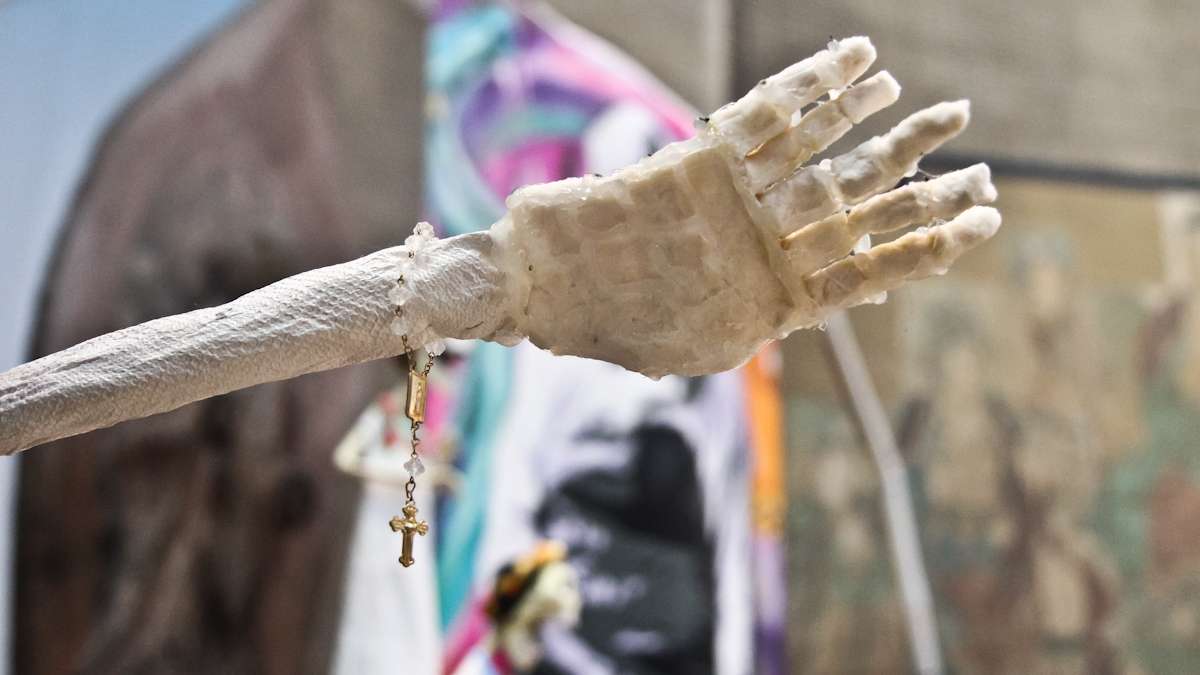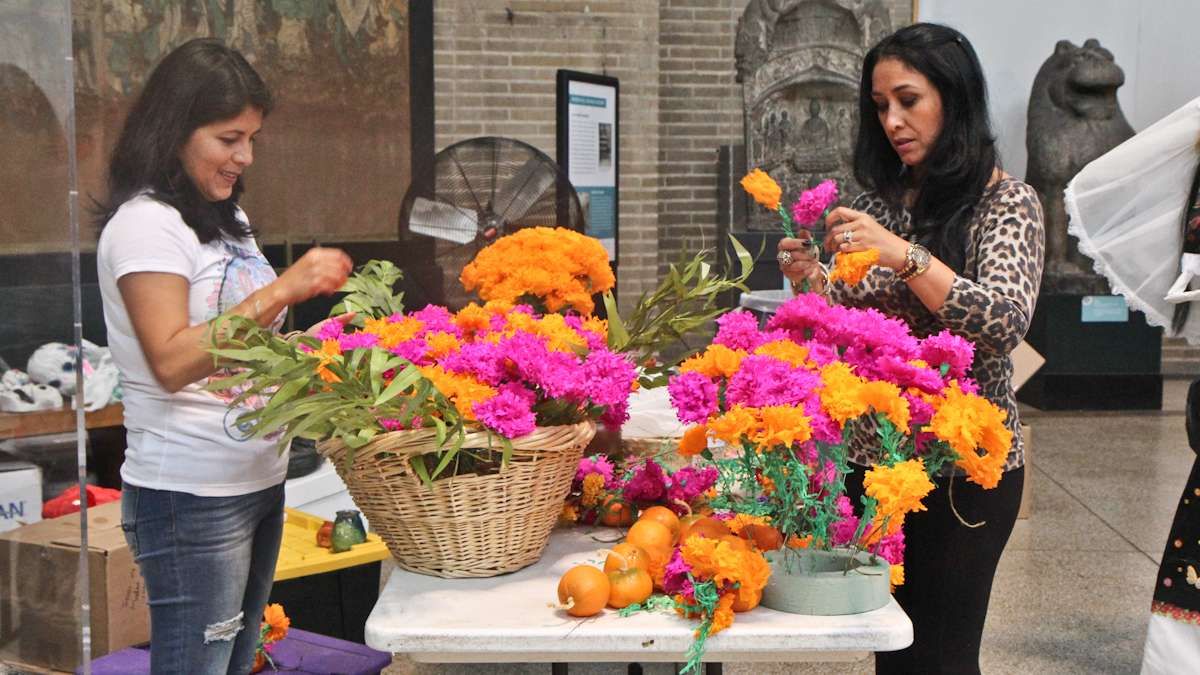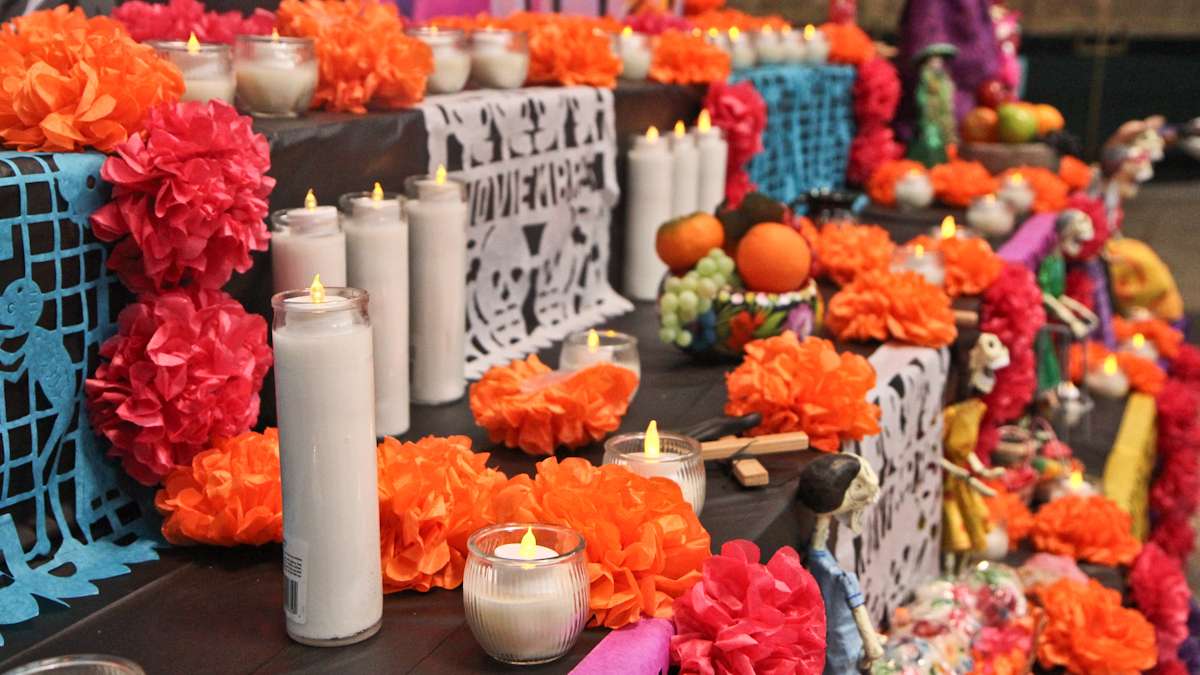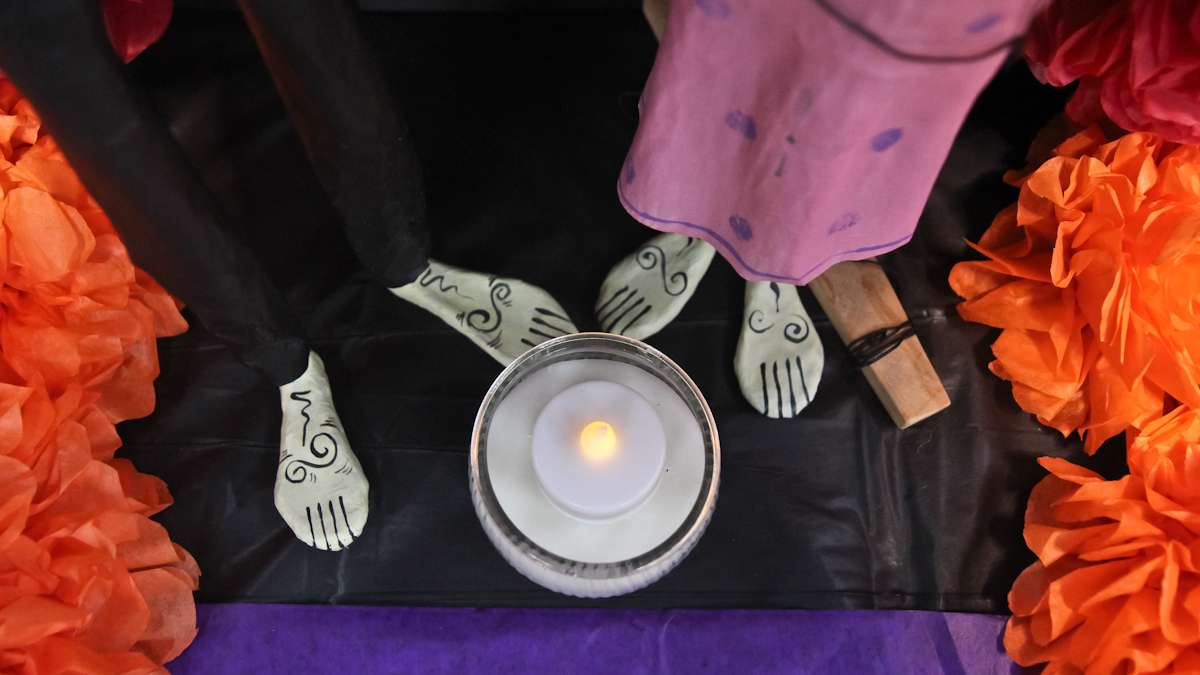Day of the Dead traditions very much alive in Philadelphia [photos]
ListenCelebrating the memory of the dead has been a pre-Columbian tradition since the Aztecs ruled Mexico. With colonialism, Catholic celebrations were superimposed onto native rituals — and the Day of the Dead, as we know it now, was born.
It’s a colorful and exuberant celebration of art, music, storytelling, and folk art.
Even the departed need a bit of a respite in their timeless journey toward eternal rest. And, the thinking goes, they might as well stop and spend time with family, accompanied by the music they liked as mortals while sharing meals of their favorite foods.
If you like this idea, you’ll be right at home in the Mexican celebration of Day of the Dead Saturday at the University of Pennsylvania Museum of Archaeology and Anthropology.
It’s tradition in Mexico and parts of Central America to build an elaborate altar, an “ofrenda,” to celebrate the life of the departed.
It’s a family and community affair, said Ana Flores, executive director of the Mexican Cultural Center in Philadelphia, who is co-sponsoring the event.
Every region in Mexico has its own customs when it comes to Día de los Muertos, but the celebrations are usually at the graveyard
For some people, said Flores, it might sound a bit creepy because “in small towns, in traditional places, entire families take the food and the go and eat it in the cemetery. But a lot of people add music and have the mariachi band or the music the person liked and make it like a party.”
At the Penn Museum, the 9-by-12-foot altar that Flores, muralist Cesar Viveros and a dozen or more volunteers created occupies one entire side of the enormous Asian Art room.
Late Mexican painter inspires altar
This “ofrenda” is dedicated, said Viveros, to the late painter Rufino Tamayo. He was the father, in many ways, of an art form that combines the many cultures of Mexico — indigenous and Western — and many art forms, from murals to canvas paintings. Tamayo’s imagery and bold colors have always inspired muralist Viveros.
Tamayo came from Oaxaca, “a small town, where he witnessed these huge beautiful ofrendas that they do everywhere in the cemeteries,” Viveros said. “For a few nights, it looks like daylight … there are so many candles, so much people, so much going on, and that influenced him. For me, he is one of the greatest painters in Mexico.”
Viveros’ portrait of Tamayo is painted in subdued colors and dominates the altar. He’s surrounded by an explosion of colorful paper flowers, masks, sculptures, ghoulish skeleton figurines, sugar skulls, fruits — real and papier-mâché — and other objects that make up the exuberant feeling of the place.
“We have papel picado,” said Flores, “tissue paper that we cut that represents the wind, and it helps … the departed to go to the afterlife.
“We also have the arch with flowers and fruits, and that represents the passageway to cross to afterlife. We have sugar skulls, colorful, so they’re not scary for the children. We have water in case they’re thirsty,” she said. “We have salt that represents the flavor of life that we put in dishes, in the food. And we made 700 marigold paper flowers to adorn the place.”
Tradition is expanding
The Penn Museum of Archeology and Anthropology has been hosting this ritual for the past four years, but as the Mexican presence grows in the city, the festivity takes on a different meaning both for immigrants and for people who want to know more about their culture.
If you look carefully around Philadelphia, you’ll see that displays of Día de los Muertos altars have multiplied in stores, restaurants and cultural centers including the Fleisher Art Memorial.
In the Día de los Muertos festivities, every artifact, photograph and heirloom is also a vehicle for oral histories, new generations learn about their grandparents and great-grandparents through the stories that are passed along.
At the Penn Museum event, visitors are summoned to surround the altar; share the food; listen to the stories; look at the multitude of decorative elements in the room; and enjoy the music and giant puppet dances.
WHYY is your source for fact-based, in-depth journalism and information. As a nonprofit organization, we rely on financial support from readers like you. Please give today.
























